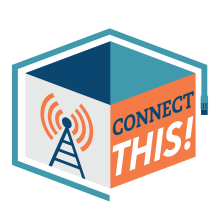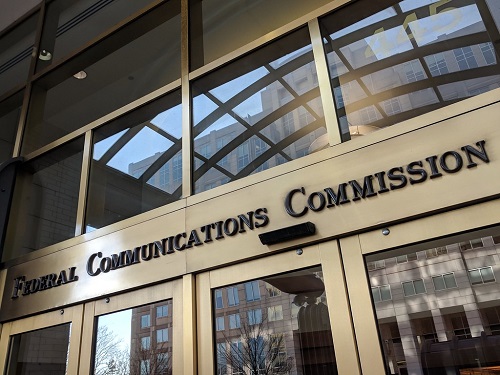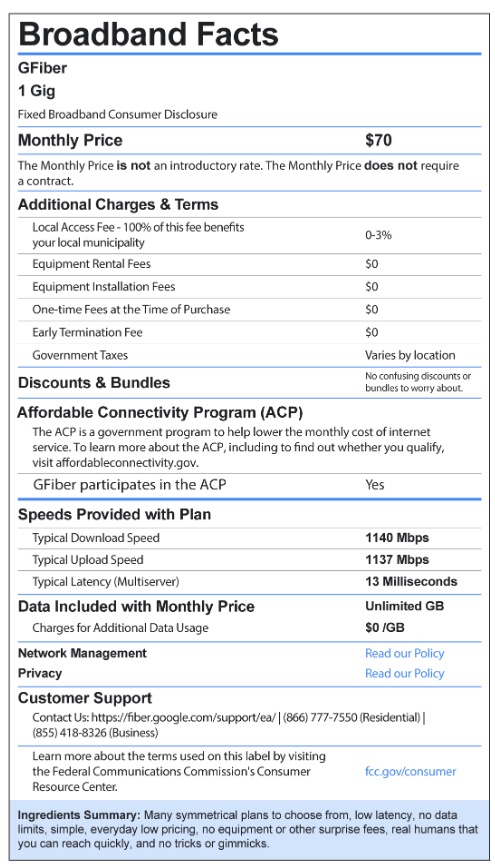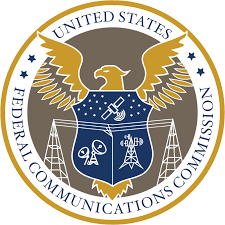
Fast, affordable Internet access for all.

As digital inclusion practitioners and broadband-for-all advocates continue to push Congress to save the Affordable Connectivity Program (ACP), 22.5 million Americans now enrolled in the program are weeks away from being officially notified of its pending termination as ACP funds are on track to be depleted by the end of April.
The looming demise of the ACP – which provides income-eligible households with a $30 monthly voucher to pay for pricey Internet service bills ($75/month for Tribal citizens living on reservations) – comes at a crucial moment in the rollout of the “Internet For All” initiative. All 56 States and U.S. territories are poised to receive nearly $45 billion in broadband expansion funds from the bipartisan infrastructure law over the next year.
Separate from the BEAD program and Digital Equity Act funding, the bipartisan infrastructure law also established the ACP with a $14.2 billion allocation. At current enrollment rates, the program disburses about $650 million per month to Internet service providers (ISPs).

This week on the podcast, Christopher speaks with Blair Levin, the former executive director of the National Broadband Plan, to discuss the landscape of broadband and telecommunications and its significance moving into 2024.
Chris and Blair delve into discussions on the FCC and its imperative to address critical issues such as the Affordable Connectivity Program (ACP) and the fate of Title II.
The conversation continues with topics on the potential for industry mergers, the evolving landscape of fixed wireless and fiber networks, and the persistent challenges associated with achieving universal service and bridging the digital divide. It concludes with touching upon the critical fiber-copper divide and underscores the importance of local government initiatives in expanding fiber networks.
This show is 44 minutes long and can be played on this page or via Apple Podcasts or the tool of your choice using this feed.
Transcript below.
We want your feedback and suggestions for the show-please e-mail us or leave a comment below.
Listen to other episodes or view all episodes in our index. See other podcasts from the Institute for Local Self-Reliance.
Thanks to Arne Huseby for the music. The song is Warm Duck Shuffle and is licensed under a Creative Commons Attribution (3.0) license.

Join us Tuesday, January 16th at 2pm ET for the latest episode of the Connect This! Show. Co-hosts Christopher Mitchell (ILSR) and Travis Carter (USI Fiber) will be joined by regular guests Doug Dawson (CCG Consulting), Kim McKinley (UTOPIA Fiber), and special guest Roger Timmerman (Executive Director UTOPIA Fiber) to prognosticate all of the broadband things for 2024: will ACP get renewed? Which states will get BEAD right, and which are showing signs of cracking under the pressure? What did we see at CES that will impact the broadband market? Is the fiber market going to pause? Tune in for titillating discussion on these topics and many more.
Email us at broadband@communitynets.org with feedback and ideas for the show.
Subscribe to the show using this feed or find it on the Connect This! page, and watch on LinkedIn, on YouTube Live, on Facebook live, or below.
As we approached the new year, and after more than a decade of criticism, the FCC finally moved to tackle the agency’s long-dated definition of broadband with an eye on nudging the industry toward faster broadband deployments. But many industry watchers say the belated reform inquiry arrives late and long after other agencies have filled the void left by a lack of FCC leadership.
The FCC’s Notice of Inquiry (NOI), issued in November, asks whether the agency should finally adopt 100 Mbps (megabit per second) downstream, 20 Mbps upstream as the new standard U.S. definition of broadband.
“Ultimately, I believe it is essential in the United States to set big goals in order to get big things done,” FCC boss Jessica Rosenworcel said in a statement. “That is why we are kicking off this inquiry to update our national broadband standard to better align it with the standards in pandemic-era legislation of 100 Megabits per second down and 20 Megabits per second up and also set a long-term goal for gigabit speeds.”
But there’s nothing about the FCC’s planned definition that’s “big.”
Of particular annoyance to long-time industry watchers is the agency’s continued adherence to an upstream standard that remains out of touch with modern needs. While Senators and consumer groups had pushed for a symmetrical definition of 100 Mbps, cable industry lobbyists managed to convince the FCC to lower the upstream bar dramatically.

Cable broadband speeds are notoriously topheavy, with downstream speeds far in excess of upstream speeds. While full duplex DOCSIS technology is supposed to eventually remedy that, the technology remains far from widespread deployment.
The Federal Communication Commission (FCC) recently published rules for its broadband nutrition label provides a partial victory for Internet subscribers and a potential marketing advantage for fiber providers – but may pose a challenge for wireless Internet service providers.
Though the new rules were finalized in October, Internet Service Providers (ISPs) have until April 10, 2024 to publish their broadband labels, though providers with 100,000 or fewer subscriber lines have until October 10, 2024.
Just like the label on the back of packaged food in grocery stores helps shoppers understand the nutritional value of the food they are buying, the broadband label requires ISPs to disclose their broadband pricing and service information (at the point of sale) to help potential subscribers make informed decisions about the service they are signing up to get.
Transparency on Display
Though the label is just another red-tape requirement for some providers, others see it as an opportunity to show off the quality of their services.

Google Fiber, for example, published via social media and its blog a preliminary version of its own broadband consumer label, just days after the final rule was published, and six months before its deadline.

This week on the final podcast of the year, join us as the staff gets together to get a handle on what happened in the broadband landscape in 2023. Returning to join Christopher are Ry Marcattilio, Christine Parker, DeAnne Cuellar, Emma Gautier, and Sean Gonsalves along with new staff members Jordan Pittman and Angelina Paniagua.
Together, they discuss the BEAD rollout, data and mapping, new municipal fiber projects, the FCC's fifth commissioner, and 2023's broadband "scandals." Give this episode a listen to find out how last year's predictions help up!
This show is 47 minutes long and can be played on this page or via Apple Podcasts or the tool of your choice using this feed.
Transcript below.
We want your feedback and suggestions for the show-please e-mail us or leave a comment below.
Listen to other episodes or view all episodes in our index. See other podcasts from the Institute for Local Self-Reliance.
Thanks to Arne Huseby for the music. The song is Warm Duck Shuffle and is licensed under a Creative Commons Attribution (3.0) license.
The American Prospect recently published an analysis – "How Monopolies and Maps Are Killing ‘Internet for All’" – authored by our own Sean Gonsalves that lays out why the federally-backed “Internet For All” initiative will likely fall short of its aspirational goals.
It begins with facts-on-the-ground reporting about the estimated 37,000 households that do not have high-quality access to the Internet in Oakland, California and how cities across the nation are plagued with similar challenges – challenges many digital advocates say is “digital redlining.”
Here's a few excerpts:
“It would be reasonable to think the Biden administration’s $1.2 trillion bipartisan infrastructure law, passed by Congress in November 2021, would change all of this. A significant part of the law devotes $65 billion to a moon shot mission, involving all 50 states and U.S. territories, to bridge the digital divide once and for all. It includes funding to build new modern networks, and other programs to address barriers to broadband adoption, like the Affordable Connectivity Program, which helps eligible low-income households pay for pricey internet bills, as well as initiatives that offer digital skills training and a mandate for the FCC to adopt rules ‘to prevent and eliminate digital discrimination.’”
“Similar to when the federal government set out to bring electricity to every household in America a century ago, the Biden administration intends to do the same with broadband, labeling this historic investment the ‘Internet for All’ initiative.”
“But what hasn’t dawned on most federal and state lawmakers—or at least, it has not been admitted publicly—is that the trajectory we are on will not lead to Internet for All, but something more like Internet for Some.”
You can read the entire story on the American Prospect website here.
This is a walk and chew gum moment for broadband-for-all advocates. On the one hand, the Federal Communication Commission (FCC) new digital discrimination rules have the potential to rein in egregious examples of digital discrimination. On the other hand, the new rules still fall short of putting forward the kinds of structural solutions necessary to address underinvestment in communities where federal infrastructure dollars may never reach.
Last week, the FCC published its final digital discrimination rules, giving the agency the authority to penalize Internet Service Providers (ISPs) whose policies have a “disparate impact” on historically marginalized communities. The Infrastructure Investment and Jobs Act (IIJA), passed by President Biden in 2021, included a mandate directing the FCC to develop “rules to facilitate equal access to broadband internet access service, taking into account the issues of technical and economic feasibility presented by that objective, including—preventing digital discrimination of access based on income level, race, ethnicity, color, religion, or national origin.”

After hosting listening sessions and inviting public comment, the final ruling ultimately defined digital discrimination as “policies or practices, not justified by genuine issues of technical or economic feasibility, that (1) differentially impact consumers’ access to broadband internet access service […], or (2) are intended to have such differential impact.” Such an approach authorizes the FCC to penalize providers even if it can’t identify instances of intentional discrimination.
Initial Responses to the Ruling
The Tribal Broadband Connectivity Program (TBCP) is in the midst of accepting applications for a second round of funding, with nearly $1 billion in grants available. A significant program with important limitations, TBCP has made some changes in round two – including one that could mean the resurgence of old barriers for Tribes.
TBCP launched in 2021 with a total $3 billion in allocations, an unprecedented federal investment in Tribal broadband. The TBCP also requires no minimum match from Tribal governments, easing a long-time barrier to grant participation.
Interest in the program’s first round of funding was pronounced. After more than 300 applications requesting nearly $6 billion, NTIA selected 226 projects for award, to the tune of $1.9 billion. At least 70 of these were “equitable distribution” awards – a system that guaranteed any of the 574 federally recognized tribes with a satisfactory application up to $500,000. All together, these grants expect to reach more than 170,000 Tribal households.

This week on the podcast, Christopher is joined once again by Sean Gonsalves, Associate Director of Communications for the Community Broadband Networks initiative.
Christopher and Sean start by discussing how a new wireless community broadband network in Syracuse, New York called Surge Link is helping the underserved households in their area. Syracuse is a prime example of how cities and towns are taking matters into their own hands by looking for ways to proactively provide affordable broadband access to their citizens right now instead of waiting for potential federal funding and local planning to align perfectly.
Sean and Christopher also unpack other recent news, including the FCC's plan to adjust the definition of broadband to 100 Megabits per second (Mbps) download and 20 Mbps upload speeds, the NTIA's Letter of Credit modifications, and the future of the Affordable Connectivity Program (ACP) with the White House asking Congress for an additional $6 billion in funding to continue the program through the end of 2024.
With ACP's future looming, Christopher and Sean finish by discussing the need and importance for a long-term solution to address the digital divide, including the financial sustainability of networks in rural areas.
This show is 33 minutes long and can be played on this page or via Apple Podcasts or the tool of your choice using this feed.
Transcript below.
We want your feedback and suggestions for the show-please e-mail us or leave a comment below.
Listen to other episodes or view all episodes in our index. See other podcasts from the Institute for Local Self-Reliance.
Thanks to Arne Huseby for the music. The song is Warm Duck Shuffle and is licensed under a Creative Commons Attribution (3.0) license.